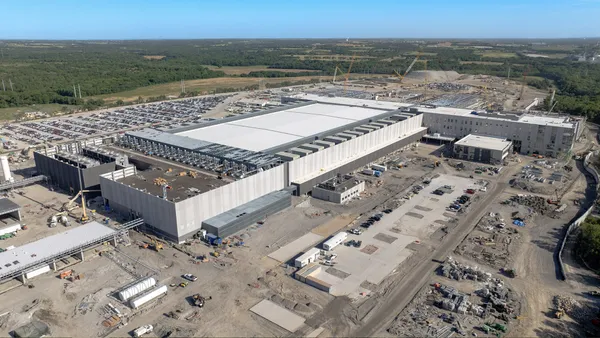The construction industry is built on a happy balance between the right materials and effective project management. But what happens when that happy balance is disrupted by ongoing shifts in the marketplace? COVID-19, increased demand, supply shortages—as the complexity grows, the pressure to change is real. The year 2022 will be the year of the digital toolbox where construction businesses look toward digital innovations to scale business demand.
Hero #1: Building efficiencies
More than ever, digital platforms, data, and analytics are driving transformation throughout the construction industry. What once was solved by pen and paper, is now optimized and made efficient by machines. One example, TOOLBX is a Canadian-based online marketplace that unites construction professionals and building materials suppliers to enable simple and efficient material procurement. TOOLBX's expertise is in keeping a project moving on the timeline, which requires that supplies must arrive at the expected time. To further optimize their online marketplace, TOOLBX employs the digital delivery management platform Onfleet to manage the efficient delivery of building materials into the waiting hands of their customers.
Hero #2: Automation where it counts
TOOLBX reports 60% of orders are made the night before delivery, making automatic routing and route optimization essential. Saving time and mental stress allows for more efficient fleet management, easier mornings, and more deliveries with less driver bandwidth.
"Auto routing is like having a smarter employee sitting next to you doing the tasks. The routing suggestions are more efficient and usually routes that I may not have thought of. Plus it is super user-friendly for the dispatchers," says Brad Anderson, Operations Manager at TOOLBX.
This is just one example. The scope of automation in the construction industry is broad and can be incorporated into initial planning and design through operation and maintenance. The more you automate, the more time you have to focus on unforeseen disruptions.
Hero #3: Scalability under pressure
Many businesses weathered the impacts of COVID-19 in 2020 and TOOLBX was no different. They felt the crunch from both industry-wide shortages and a spike in demand. In fact, demand increased by 100% almost overnight from lockdowns in Canada.
"Even with the huge volume increase, Onfleet was able to keep up and didn't crash from the spike in usage. While other routing platforms are static, Onfleet was able to handle adjustments on the fly to add or remove tasks based on shortages in materials. This alone has helped win our loyalty and trust," Anderson added.
The right tools for scalability are key. If you can't easily flex during industry changes, you will lose out to your competitors.
Hero #4: Customer experience still top of mind
In a world where anything and everything is just a click away, an easy, amazing customer experience is essential to keeping your customers yours. No matter what digital tools or applications are being used, everyone wants fast, easy functionality. A great customer experience is reassuring and builds customer loyalty whether it's your own construction business website or the digital platforms you use to optimize your business.
Construction businesses, material suppliers, and the companies that support them all play a part in the balancing act of industry disruptions. In 2022, we predict that efficiency, automation, scalability, and customer experience will be important for driving success in the construction industry.










